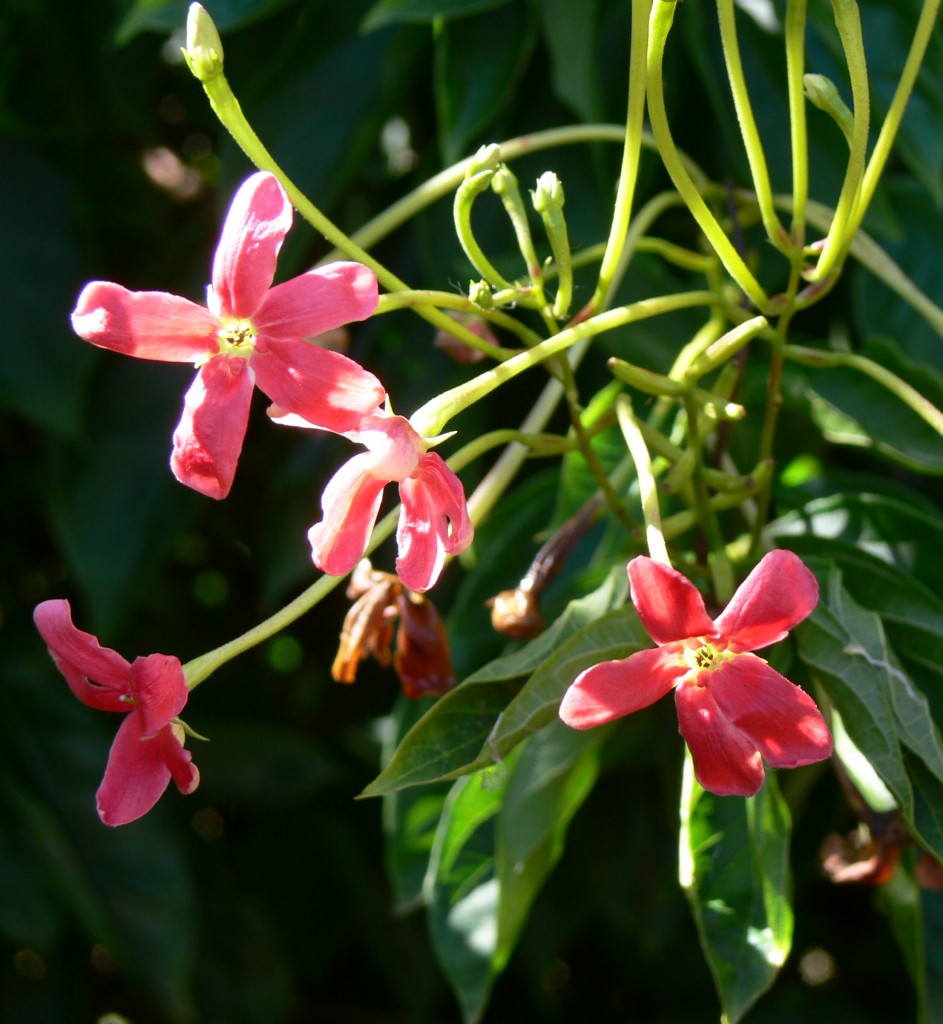Plant Directory
Rangoon Creeper (Quisqualis)
Who? What? Where? When? If the early taxonomists (those who name plants) had a twisted sense of humour, this plant would have been called Quisqualisquoquando! Thankfully they just settled for the first two.
Early explorers sent samples of the plant and descriptions back home for classification and a very contradictory picture was painted. It was described as a shrub by some and a creeper by others. It has thorns and no thorns. The flowers are red. No, pink! No, white! Oh, and they have no scent but the smell of toasted coconut around the shrub is heavenly. Needless to say, the taxonomists were confused. The name Quisqualis is therefore apt and somewhat amusing.
Originating from the Philippines, India and Malaysia, it has naturalised in much of the tropical forest regions of the world. Quisqualis indica or The Rangoon Creeper is the most commonly cultivated of the genus. It is a liana (woody vine) which would normally be found in tropical forests. The thick woody vine of a liana does not only provide support and a means of transporting nutrients to its flowers and foliage. It also serves the role as a highway through the canopy for arboreal animals.
The flowers are certainly the three colours as described, starting white and changing to pink and red over subsequent days. They hang abundantly in clusters throughout summer, giving off their perfume in the evening.
The Rangoon creeper can climb up to 21 metres in the tropics though is likely to reach a limit of 6-8 metres here on the Sunshine Coast. If planted near a tree, like most climbers, it can eventually dominate the tree and lead to the tree’s demise.
Provide some form of climbing frame for it in the form of an arbour, pergola or latticed fence. This will keep the flowers at a level which allows you to enjoy their beauty and scent as well as providing ease of maintenance.
It is a bit difficult to propagate. Plants propagated by seed will retain a bushy shrub like habit for the first few years and those propagated by vegetative means will provide a climbing habit immediately. At the beginning of spring, cut back the smaller stems to a few main leaders to encourage a bushier growth and greater flowering. You can also grow Quisqualis in pots if regularly pruned to a shrub shape.
It will adapt to a wide range of soil types, from sandy loam to clay loam. Because it originates from moist tropical regions, it does prefer a good supply of organic matter in the soil. Provide a position with good sunlight to keep the plant bushier.
The Rangoon Creeper is frost tender. Gardeners in the hills will have a greater success of growing it than those off the range.
The old petiole will stiffen after leaf drop, resulting in a blunt thorn. This can make pruning a little painful if you are not careful. Wear a long sleeved top and be thankful it is not bougainvillea.
The leaf, fruit, seed and root are used traditionally to treat or alleviate a wide range of medical complaints. Some references state that the plant is poisonous, so do not try to self medicate without professional advice.




